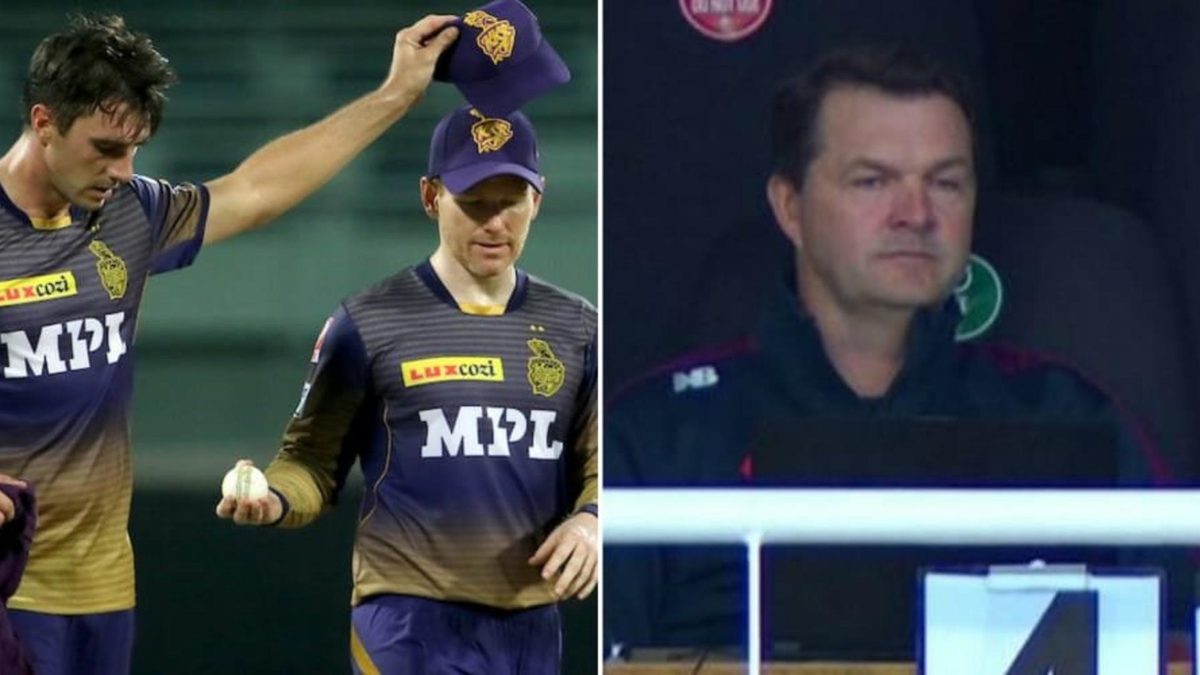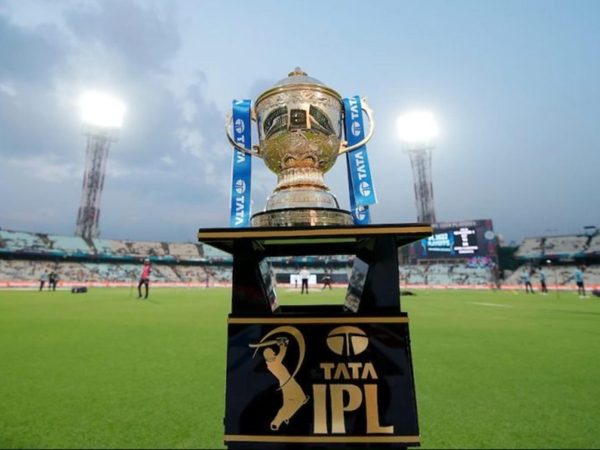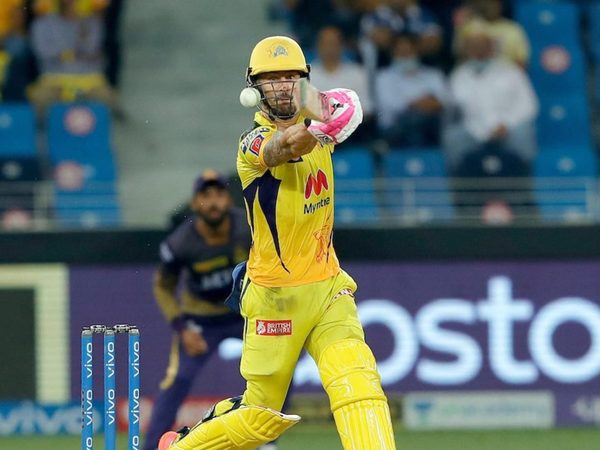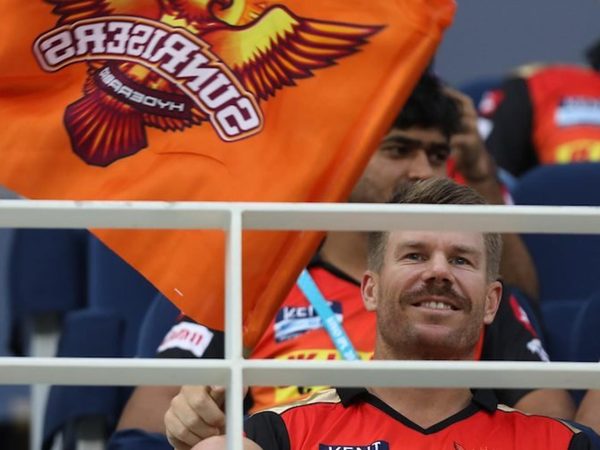
Eoin Morgan seemed to get a bit of help from the dugout in some of the on-field decisions made in the game between Sunrisers Hyderabad and Kolkata Knight Riders in IPL 2021. Rohit Sankar argues why it should become mainstream.
Subscribe to the Wisden Cricket YouTube channel for post-match awards, player interviews, analysis and much more.
In early February, Kolkata Knight Riders hired Nathan Leamon as their strategic consultant, a decision that flew under the radar for several reasons including the most obvious one: the role of analysts remains trivialised among most casual cricket fans.
Here’s the complete IPL 2021 schedule, along with TV and live streaming details.
KKR have one of the most acclaimed performance analysts in their ranks already in AR Srikkanth, making Leamon’s hiring an intersting one, if you don’t delve further into it.
Leamon, who is England’s analyst, is on a leave of absence from the ECB to take part in the IPL. England saw value in Leamon spending quality time with their T20I skipper in a premier T20 tournament in the country where the T20 World Cup will be held.
KKR, on the other hand, added one of the best analysts in the sport on top of another they already have in their ranks. The upside? A potential combination of Morgan and Leamon working hand-in-hand to help the franchise make a U-turn on some of their recent fortunes.
That it was one of the best acquisitions made by a franchise in the pre-tournament build up became pronounced as Kolkata appeared to make their moves with more clarity and precision in their first game of the season against Sunrisers Hyderabad. A standout instance of this was Harbhajan Singh taking the new ball against David Warner, creating a wicket-taking chance (although the catch was shelled by Cummins) and then not bowling again in the game with Warner dismissed next over.
“It was to do with match-ups,” Morgan said in the post-match press conference before reiterating Harbhajan’s value in the KKR setup. The keyword here is match-ups. It’s something England have poured their hearts into and used well over the last few years in their white-ball renaissance, one that Leamon, as much as Morgan, has been a big part of.
However, it’s not always easy for captains to hark back to that quick discussion with the team analyst in the dressing room. With the growth of cricket data analytics, the analysts, more important than ever, are constantly feeding information to the skipper.
Surely they could try wearing an ear piece while on the ground and take instructions? Nope. Done, caught and reprimanded already in the 1990s by Hansie Cronje and Bob Woolmer, a pair ahead of their times.
Rigid in its own ways, cricket has its set ways and rarely departs from the path it has carved for itself over the decades, but Leamon and England have found a hack that is permitted within the game’s laws – codes shown on a placard from the dressing room by the analyst that the skipper sees and plays with. During the SRH-KKR game on Sunday, Leamon was spotted showing these placards from the dugout to Morgan, exactly like he did in South Africa.
Nathan Leamon is back with those codes for Morgan from the dugout.
Was done during the Eng SA series, now for #KKR.Should become a mainstream tactic!#SRHvKKR #IPL2021 pic.twitter.com/tvG3lBjTSQ— Rohit Sankar (@imRohit_SN) April 11, 2021
It first came to the fore in the Pakistan Super League with the Multan Sultans where Leamon was again the analyst and Andy Flower the head coach. Leamon would feed inputs to skipper Shan Masood in codes that the player understood. The decision-making still rested on the on-field captain.
“We weren’t doing a Bob Woolmer with a microphone in the ear, or breaking any rules like that. We were communicating with him, and maximising the information that he had available, but with the understanding that it was always his decision out there in the middle,” Flower later said in an interview with ESPNCricinfo.
In South Africa last year, shortly after the pandemic when England toured, the placards made a controversial appearance in the third T20I between the teams. England took the permission of match officials and displayed a combination of letters and numbers from the dressing room window to aid Morgan on the field.
England received some criticism for the strategy but they did so only because they were clever enough to implement it. Did the opposition camp feel England had an advantage?
“I am totally in support of that,” Prasanna Raman, South Africa’s performance analyst during that England series, tells Wisden.com. “Captain or bowlers just can’t remember all the plans set for every batsman. Sometimes they forget few important pointers when the game goes on tougher situations. Analysts like us will remember everything because it’s our job. You wake me up at 2am I can still say all the plans. You can’t expect the same with players, it’s tough.”
Information being passed from the dressing room to players on the field has always been a common practice in the sport; be it the underhanded role of the drinks carrier in passing the coach’s instruction manual to the batsmen on the field or the bowling coach whistling at the boundary rider to pass a quick coaching tip mid-over.
“I give a sheet to everyone with single pointers where one of the players will have the sheet in their pocket to see things are going on well. And I also paste the sheet in the teams dressing room for people to see it all the time. The bowling coach will also have this sheet in his pocket in the dugout for his reference to relay info to the players when things go wrong,” Raman says.
The most forward-thinking of cricket’s formats is T20s and it’s likely that the change will begin here. Data analytics and its usage in cricket have shot up in the past few years with several franchises worldwide adopting it to find success. Five-time IPL title-winners Mumbai Indians is a prominent example in this regard.
The placards could be the analyst communicating match-up information or reminding captains of the plan for a certain batsman. It could even be a signal to remind the captain about a certain field setting. Waiting till the end of the over to pass that information on with a strategic 12th man might be too costly in a format as short as this where consequences unfold with great speed.
The important question here is if the team gains an upper hand over the opposition by this flow of information. The simple answer is that the opposition should try it, too.
It is vital that data analysis is understood as a tool to aid the decision-making of a player, be it the captain, the batsman or the bowler. The analyst could warn the batsman about Rashid Khan’s change in grip for a googly and the batsman, as diligent as he is, could still be bamboozled by the skill of the bowler. Cricket is played on the field, and above every analysis and data is execution and ultimately there’s nothing else that separates the winner and the loser as much as this.
More awareness about the shortcomings of a player on the field not only makes the game and the passage of play more interesting, but also brings out the true test of his skills. At the end of it all, we want better cricket to be on display and if the skill and ease of execution are tested, it only makes for a better spectacle.








